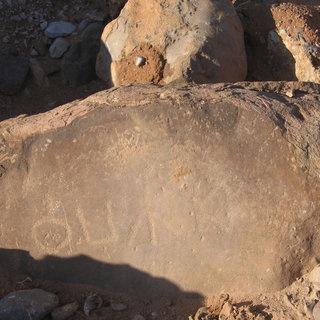I've been thinking about this recently and the more i think about it The more idea that sumado are just "clan markings" or for branding camel ownership Is kinda ridculous. We have a set of 20 something symbols that look like letters and we have names for each of them. Doesn't that strike you as very odd if it was just a marking ? Why wouldn't every clan just have a unique symbol like you see with arab clan flags or the Japanese noble clans ?
There's also the fact that people also put these symbols on objects and we find them in the environment on walls and graves. The closest thing I've seen to something that looks like sumado is the amazigh scripts from North Africa still used by the nomads like the tuaregs .
There's also the fact that people also put these symbols on objects and we find them in the environment on walls and graves. The closest thing I've seen to something that looks like sumado is the amazigh scripts from North Africa still used by the nomads like the tuaregs .


